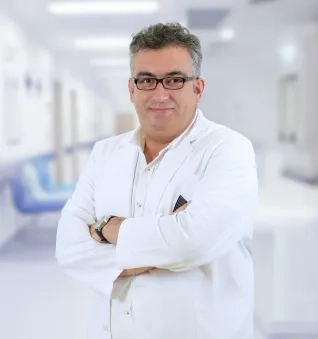Alo Yeditepe
Alo Yeditepe
Causes of Arhythmia Can be Displayed in 3D
Indicating that very effective results can be achieved through the ablation method in the treatment of arrhythmia, which occupies an important place in terms of incidence among heart diseases Prof. Dr. Tolga Aksu said that it was possible to reach more accurate results in diagnosis and treatment, especially through the Three-Dimensional Mapping Method, which had been started to be used recently.
Reminding that through the ablation method, which has been used for many years, it is possible to treat arhythmia in one go without any external intervention Prof. Dr. Tolga Aksu underlined that the 3D Mapping method also made a very important contribution to achieving the desired results. Pointing out that the heart can only be seen in two dimensions in a traditional ablation application, Yeditepe University Kozyatağı Hospital Cardiology Specialist Prof. Dr. Tolga Aksu stated, “With the opportunity of three-dimensional imaging offered by this method, we can both give the patient accurate results about the causes of the problem and achieve the desired results in treatment.”
All Points of the Heart Are Visible, Its Anatomy Can Be Mapped
Indicating that 3D Mapping and ablation application are preferred especially in cases where there is more than one area from where arhythmia arises or its impact on the heart is greater, Prof. Dr. Tolga Aksu gave the following information on the subject: "Simple ablation methods with scopy devices are preferred in the treatment of arrhythmias that we can describe as simple. However, we use the ablation method together with Three-Dimensional Mapping in conditions such as tachycardia also accompanied by structural heart diseases. Through the 3D Mapping Method, we can reach all points of the patient's heart as if we are viewing it in surgery and we can easily map its anatomy. Thus, it becomes possible to see and treat much more complex arrhythmia foci.”
The Source of the Arhythmia Can be Detected Millimetrically
Noting that the heart has its own electrical system and if this system is damaged during treatment the patient may remain pacemaker-bound, Prof. Dr. Tolga Aksu said, "Therefore, we try to reduce the error margin during ablation to zero. This method helps us find where the arhythmia originates millimetrically. Through ablation, we have the chance to check to what region and how much energy is given in the heart. Therefore, it makes a crucial contribution to us in achieving the results we want.”
“System is not Enough Alone; a Multidisciplinary Team is Also Required”
Indicating that in order to use the mapping method, it is crucial to have good equipment and a working technical team, Prof. Dr. Tolga Aksu said, "This method must be applied together with a multidisciplinary team. So just having a device does not solve the problem. The doctor and the team must be very well organized.”
When to Administer Ablation Therapy?
Emphasizing that an accurate diagnosis and treatment are crucial in arrhythmias, Yeditepe University Kozyatağı Hospital Cardiology Specialist Prof. Dr. Tolga Aksu, underlined that those who had heart palpation complaints must consult a cardiologist. Stating that only specialists can determine whether a person would be eligible for ablation therapy, Prof. Dr. Tolga Aksu remarked, “Ablation is the most beneficial method for arrhythmia patients and the one that touches their lives the most. Through ablation, it becomes possible to treat arhythmia at one go without any external intervention to the patient, without placing something permanent from the outside, such as a pacemaker.”
Press Coverage: cumhuriyet | milliyet | posta | haberturk | mynet | haberler | gazetevatan
This content was prepared by Yeditepe University Hospitals Medical Editorial Board.
”
See Also
- What is Heart Rhythm Disorder (Arrhythmia)? Symptoms and Causes
- What is Sudden Cardiac Death? What are the Symptoms?
- Risk Factors in Heart Diseases
- How Do Heart Disease Risk Factors Affect Women and Men?
- What is a Heart Attack? What are the Symptoms of a Heart Attack?
- Carotid Artery Disease
- What is Intravenous Ultrasound (IVUS)?
- Is Your Heart Ready For Winter?
- The Risk of High Blood Pressure Increases as You Go to High Altitudes
- By 2025, Hypertension Patients Are Expected to Reach 1.5 Billion
- Misconceptions about the Female Heart
- Experts Warn: In Case of Fainting, Consult a Cardiologist First
- Coronary CT Angiography (Virtual Angiography)
- Effort Test
- Heart Attack Causes and Symptoms
- Can Permanent Treatment Be Provided for Rhythm Disorders?
- Technique Developed by a Turkish Doctor Has Become Part of Literature; Is Now an Alternative to Pacemakers
- Professors from America Came to Watch the Technique Developed by the Turkish Physician on Site!
Alo Yeditepe




